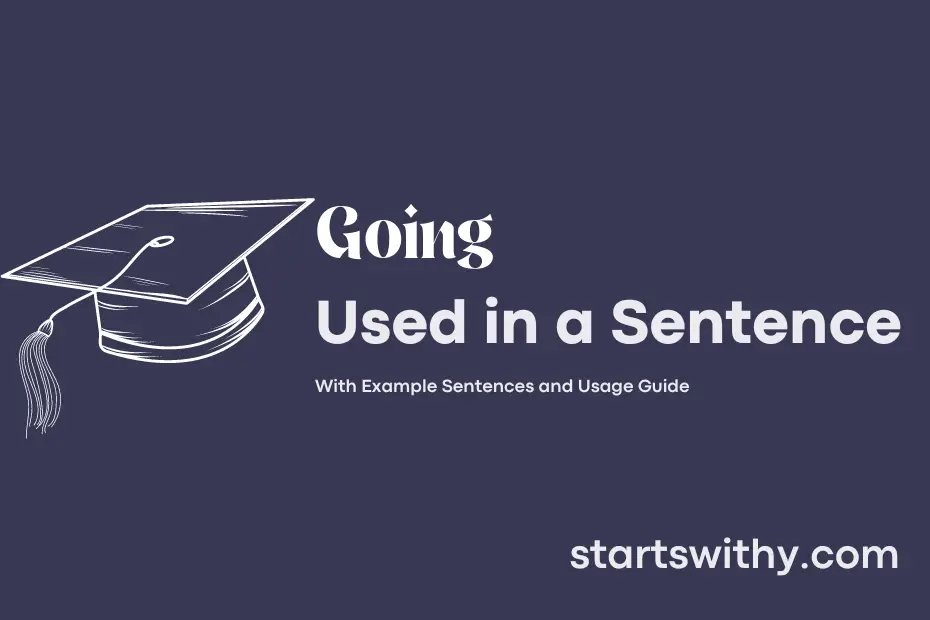Have you ever struggled to understand how to use the word “going” correctly in a sentence? The word “going” is a common present participle in English, often used to indicate ongoing actions or future plans.
Whether it’s expressing an action in progress or indicating intentions for the future, knowing how to use “going” effectively can elevate your language skills. Stay tuned to uncover the various ways this versatile word can enhance your communication.
7 Examples Of Going Used In a Sentence For Kids
- I am going to the park with my friends.
- She is going to eat lunch soon.
- He is going to the library after school.
- They are going to play outside.
- We are going to learn new things today.
- You are going to have fun at the party.
- The cat is going to sleep in its cozy bed.
14 Sentences with Going Examples
- Going to college every day can sometimes feel like a routine.
- During exams, going to the library becomes a daily ritual for most students.
- Going to a food stall for a quick bite between classes is quite common.
- Some students prefer going to a nearby cafe to relax and unwind after a long day.
- Going to a student club meeting can be a great way to make new friends.
- Going to a career fair can help students explore job opportunities.
- Going to a seminar by a guest lecturer can be very informative.
- Going to the gym regularly can help students stay fit and active.
- Going to a college festival is always a fun experience.
- Going on a trip with college friends can create lasting memories.
- Going for a study group session can help students understand difficult concepts.
- Going to a sports event to support the college team is always exciting.
- Going for a movie night with roommates can be a great way to relax.
- Going for a part-time job can help students gain valuable work experience.
How To Use Going in Sentences?
Going is used to describe the act of moving from one place to another. It can also be used to talk about future actions.
Here are some examples of how to use going in a sentence:
- Present tense: “I am going to the park to meet my friends.”
- Past tense: “She was going home when she realized she forgot her wallet.”
- Future tense: “They are going to the concert tomorrow night.”
- With helping verbs: “We are going to have dinner at that new restaurant tonight.”
- Asking questions: “Are you going to the party this weekend?”
Remember to pair going with the appropriate verb tense to make sure your sentence is clear and accurate. You can also use going to describe gradual changes or growth over time. For example: “The plant is going well with regular watering and sunlight.”
It’s important to pay attention to context when using going in a sentence, as it can have different meanings depending on the situation. Practice using going in different tenses and situations to become more comfortable with using it correctly.
Conclusion
In conclusion, varying your sentence structures with the use of different forms of the word “going” can add depth and interest to your writing. By incorporating sentences such as “I am going to the store,” “He was going to the park,” and “They are going to the movies,” you can create a more dynamic and engaging narrative. Additionally, this technique can help prevent your writing from becoming monotonous and can keep your readers captivated.
Ultimately, the key to effective writing is to keep your audience engaged and interested throughout. By utilizing different forms of the word “going” in your sentences, you can achieve this goal and elevate the quality of your writing. So, next time you sit down to write, don’t forget to experiment with sentences that incorporate this versatile word to enhance the overall flow and impact of your work.



